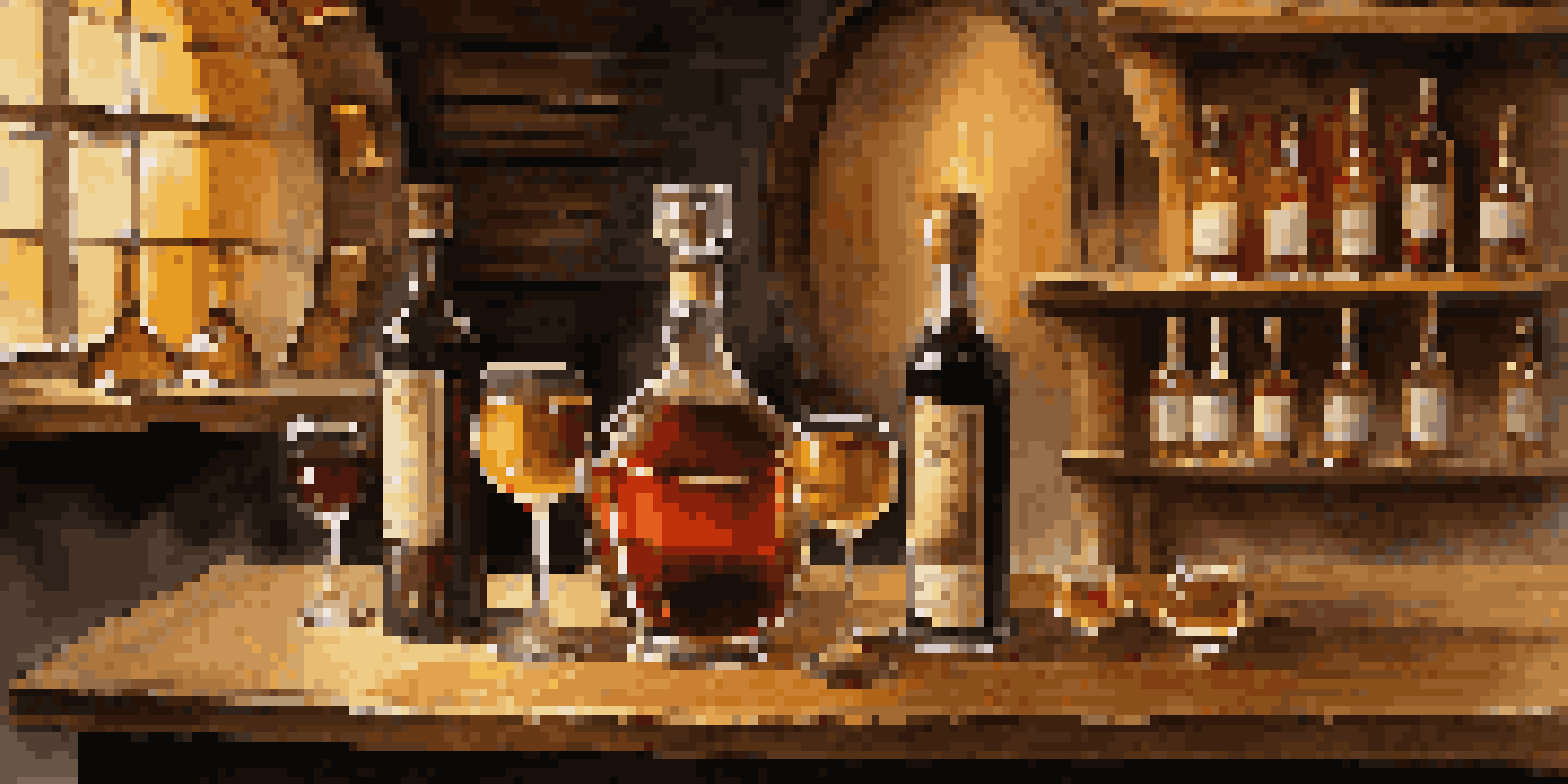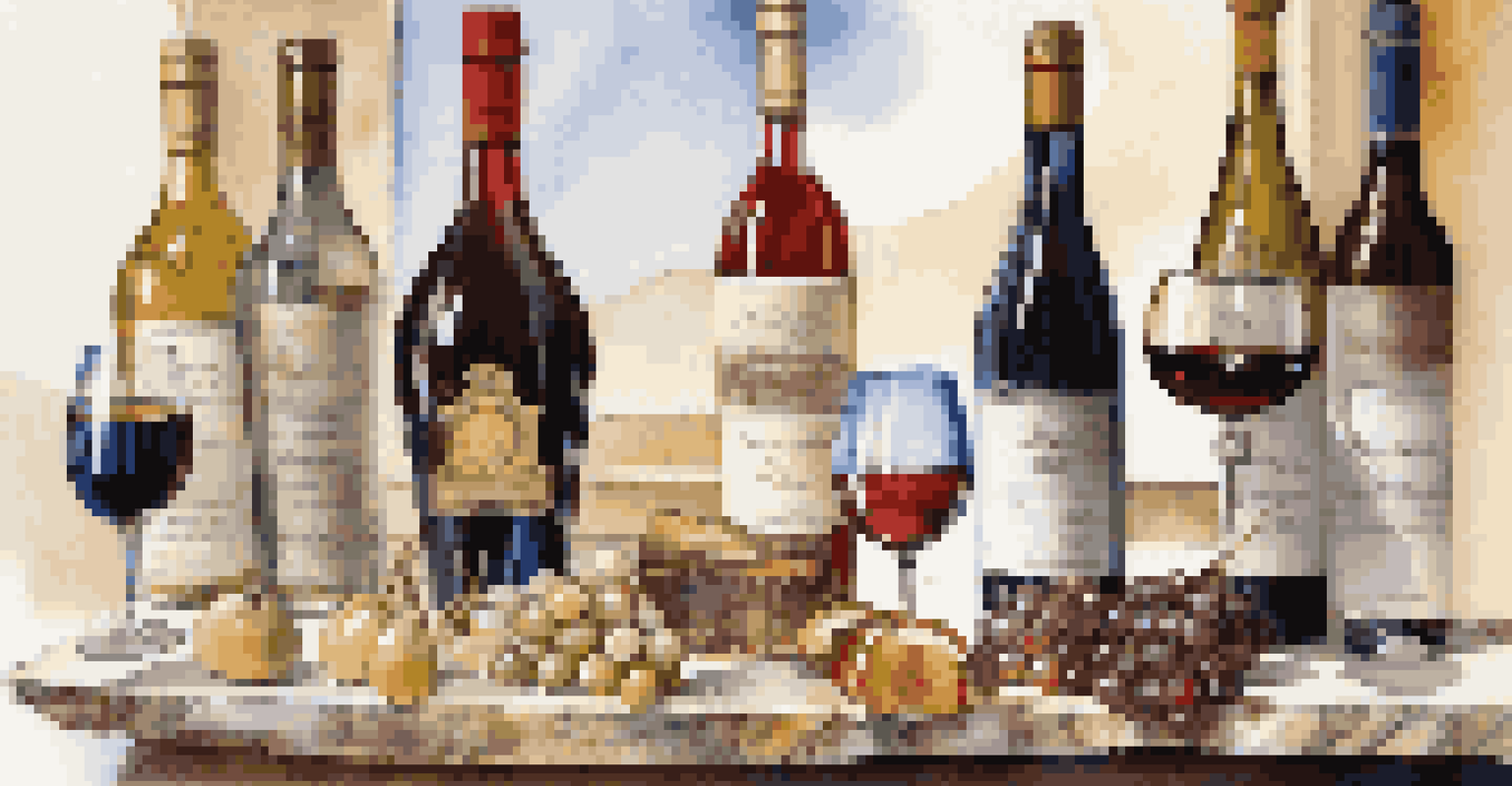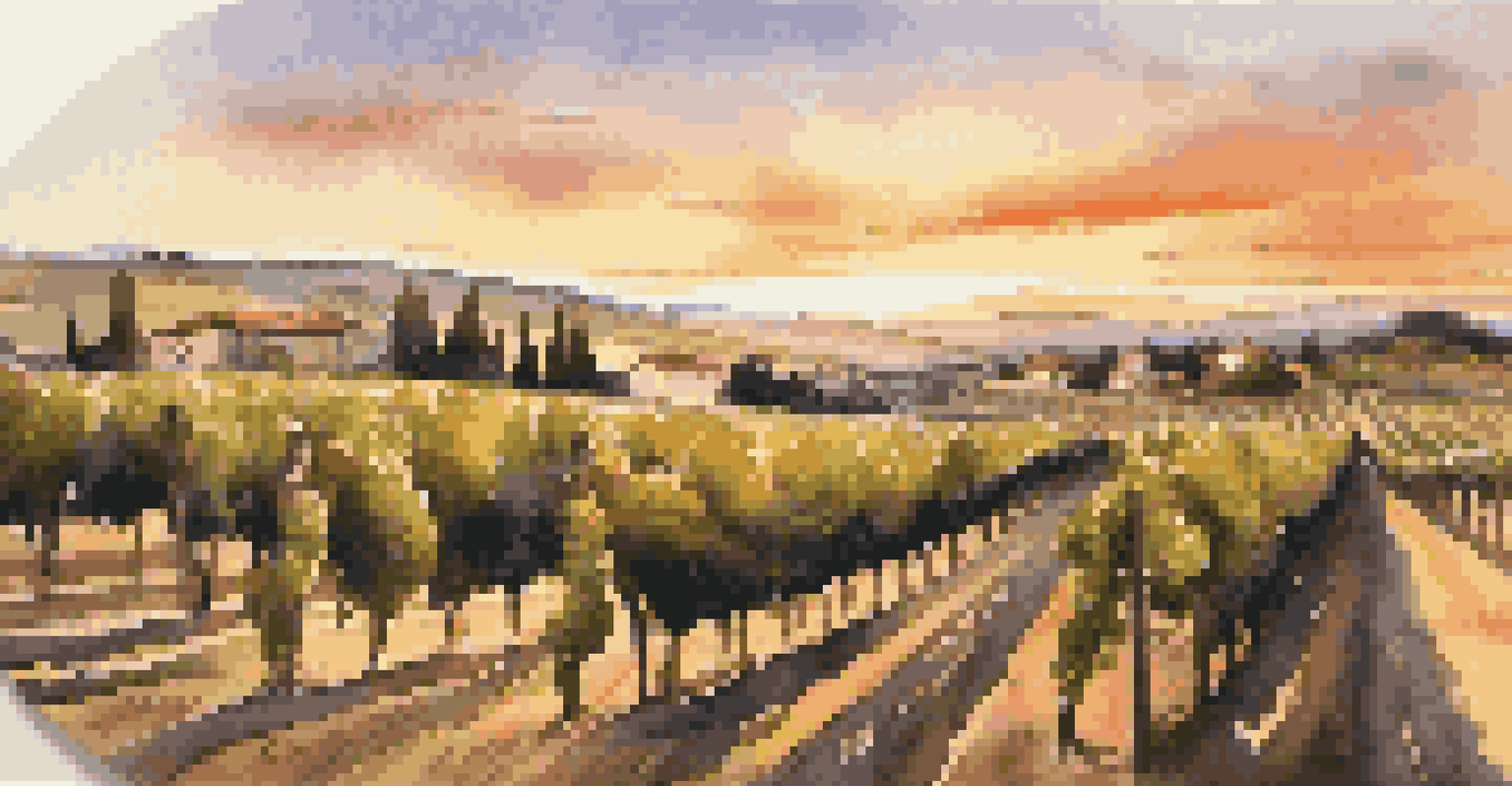Understanding the Complexity of Fortified Wines

What Are Fortified Wines and How Are They Made?
Fortified wines are essentially wines that have had a distilled spirit added to them. This process increases both the alcohol content and the complexity of flavors. Common spirits used include brandy, which is often added after fermentation, resulting in a sweeter taste.
Wine is sunlight, held together by water.
The fortification process can occur at different stages of winemaking, leading to various styles of fortified wines. For example, adding spirit during fermentation results in a sweeter wine, while adding it after fermentation creates a drier wine. This versatility gives winemakers room to experiment and create unique products.
Popular types of fortified wines include Port, Sherry, and Madeira. Each has its own distinct flavor profile and production method, showcasing the diverse possibilities within this category. Understanding these differences is key to appreciating fortified wines.
The Rich History of Fortified Wines
The origins of fortified wines can be traced back to the 17th century, when sailors needed durable beverages that could withstand long sea voyages. By fortifying wine with spirits, they created a product that was less likely to spoil. This necessity gave birth to some of the most beloved fortified wines we enjoy today.

Countries like Portugal, Spain, and Italy became known for their fortified wines, each developing unique styles influenced by local traditions and climates. For instance, Port originated in the Douro Valley, while Sherry hails from the sunny region of Jerez. These regional distinctions add to the rich tapestry of fortified wine history.
Fortified Wines Explained Simply
Fortified wines are created by adding distilled spirits to wine, enhancing both alcohol content and flavor complexity.
Today, fortified wines are not just a relic of the past but continue to evolve. Modern winemakers are revisiting traditional methods while also experimenting with new techniques, ensuring that the legacy of fortified wines remains vibrant and relevant.
Understanding the Different Types of Fortified Wines
When it comes to fortified wines, variety is truly the spice of life. Each type offers a different tasting experience, with unique characteristics and flavor profiles. For example, Port is known for its rich sweetness and dark fruit flavors, while Sherry can range from dry to sweet, showcasing notes of nuts and dried fruits.
In wine, there is truth.
Madeira, another popular fortified wine, stands out due to its distinct aging process that involves heating and oxidation. This gives it a unique complexity and a long shelf life, making it a favorite for collectors. Understanding these differences can enhance your appreciation for each type and help you choose the right one for any occasion.
Exploring these varieties can be a delightful journey for your palate. Each sip reveals a different story, influenced by the grapes, the region, and the winemaking techniques used. So, whether you're new to fortified wines or a seasoned enthusiast, there's always something new to discover.
The Role of Aging in Fortified Wines
Aging plays a crucial role in the development of fortified wines, contributing to their complexity and flavor depth. Many fortified wines are aged in barrels, which allows them to interact with the wood, imparting additional flavors such as vanilla, spice, and toast. This process can take anywhere from a few years to several decades, depending on the desired style.
For example, vintage Ports are typically aged for a short period in barrels before being bottled, allowing them to retain their youthful fruitiness. In contrast, Tawny Ports are aged longer, resulting in a more complex flavor profile with nutty and caramel notes. Understanding these aging processes can help you appreciate the craftsmanship involved in creating these wines.
The Rich History Behind Fortified Wines
Originating in the 17th century for sailors, fortified wines have evolved through regional traditions and modern winemaking.
Moreover, the environment where the wine is aged also affects its character. Factors like temperature, humidity, and air circulation can all impact how a wine develops over time. This adds another layer of complexity to the already intricate world of fortified wines.
Food Pairings: Elevating Your Fortified Wine Experience
Pairing fortified wines with food can elevate both the meal and the wine, creating a delightful harmony. The rich and complex flavors of fortified wines make them versatile companions for a variety of dishes. For instance, a sweet Port pairs beautifully with blue cheese, enhancing both the cheese's creaminess and the wine's sweetness.
Sherry, particularly dry varieties like Fino, complements seafood and tapas nicely. Imagine enjoying a glass of Fino with salty olives or crispy calamari; the crispness of the wine cuts through the richness of the food, creating a balanced experience. This interplay of flavors is what makes food and wine pairing such an enjoyable endeavor.
Experimenting with different combinations can lead to delightful discoveries. Don't hesitate to explore traditional pairings or create your own; the world of fortified wines is as much about personal taste as it is about established norms.
The Global Impact of Fortified Wines
Fortified wines aren't just a regional specialty; they have made a significant impact on the global wine industry. Their unique characteristics and rich history attract enthusiasts and collectors worldwide, contributing to a thriving market. This global interest helps sustain traditional winemaking practices and encourages innovation.
Moreover, fortified wines have become a staple in bars and restaurants, featured in cocktails and paired with gourmet dishes. Their versatility allows bartenders and chefs to experiment with flavors, bringing fortified wines into new culinary realms. This trend has sparked renewed interest among younger generations who may not have previously explored these wines.
Choosing Your Perfect Fortified Wine
Selecting the right fortified wine involves considering your taste preferences and the occasion, whether sweet or dry.
As fortified wines continue to gain popularity, they also promote cultural exchange. Enthusiasts can experience the traditions of different regions through their wines, fostering a deeper appreciation for the craft. The global appreciation of fortified wines demonstrates that, despite their historical roots, they remain relevant and exciting in today's wine landscape.
How to Choose the Right Fortified Wine for You
Choosing the right fortified wine can feel overwhelming with so many varieties available. Start by considering your taste preferences; do you enjoy sweet or dry wines? If you lean towards sweetness, Port or a sweet Sherry could be your go-to. For those who prefer something drier, a Fino Sherry or a dry Madeira might hit the spot.
It's also helpful to think about the occasion. Are you looking for something to pair with dessert, or do you need an aperitif? Knowing the context in which you'll enjoy the wine can guide your selection. Remember, there's no right or wrong choice—what matters most is what you enjoy.

Finally, don't hesitate to ask for recommendations at your local wine shop or restaurant. Staff can help you navigate through the options based on your preferences and the food you're planning to serve. Exploring different fortified wines can be a fun adventure, so embrace the journey!